5 Unexpected Places to See Wild Horses
We’ve highlighted places to view wild horses in the U.S. before, but what about abroad? Check out these unusual locales that support wild horse herds of their own.
by Jocelyn Pierce
There are several locations across the U.S. to view wild horses-an iconic symbol of the American West, but don’t stop there! We’ve compiled some surprising places to see wild horses across several continents for diverse travel experiences.
Japan’s Kandachime
Cape Shiriya, part of Shimokita Hanto Quasi-National Park on the northeastern tip on Honshu, is incredibly scenic with dark rocks, cliffs, wetlands, rare flowers, as well as an iconic lighthouse built in 1876.
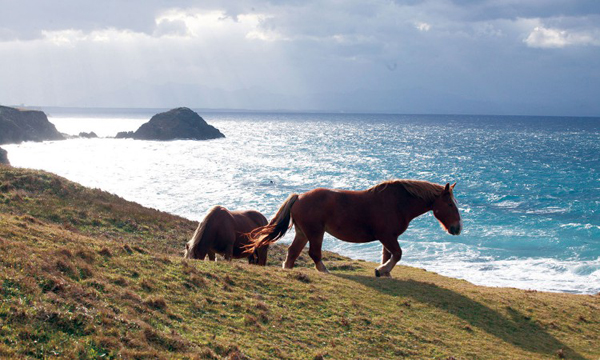
Photo credit Aptinent
Wild horses known as Kandachime can be found roaming freely at Cape Shiriya, feeding on sparse vegetation. They are known to be of stocky build, with short legs, and are especially hardy, as they thrive on the cape year round, including the harsh winters.
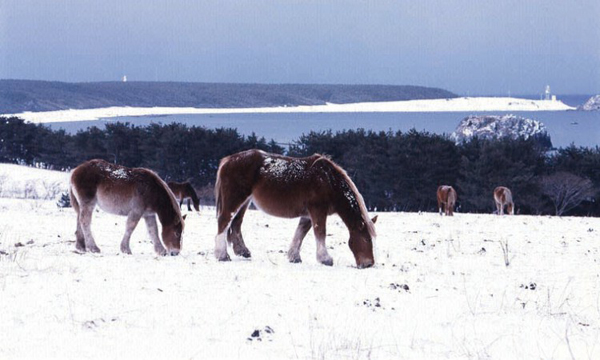
Photo credit Aptinent
The Kandachime are also known to be fairly docile, and visitors may find it easy to get photos with them.
Germany’s Dülmen Pony
The Dülmen Ponies live in a fenced sanctuary in the nature reserve of Merfelder Bruch outside of Dülmen. There are records of the ponies dating back to the 1300s, but when they became endangered, Duke Alfred von Croy built the sanctuary in 1847 to protect them. Today around 300 wild ponies reside there.

Photo credit Stadt Dülmen
The sanctuary is comprised of woodlands, grasslands, and meadows and also has plenty of hiking trails for visitors who are welcome to explore the nature reserve and watch the ponies in their natural habitat.
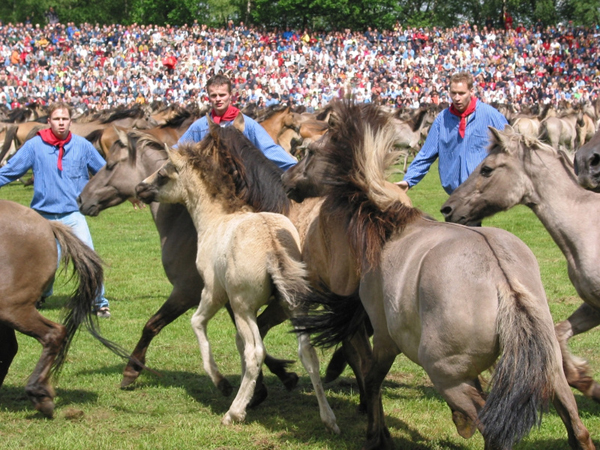
Photo credit Stadt Dülmen
Once a year, on the last Saturday in May, the ponies are rounded up while thousands of visitors watch. The young stallions are separated from the herd to prevent inbreeding and conflict among the stallions. Captured stallions are sold or raffled, and are often trained to become mounts for recreational riding.
Australia’s Brumbies
A brumby, or wild horse, can be found in many areas of Australia, but the best-known brumbies are in the Australian Alps region in southeastern Australia. Brumbies are descendants of escaped or lost horses, some even dating back to early European settlers most likely from South Africa, Indonesia, and Great Britain.
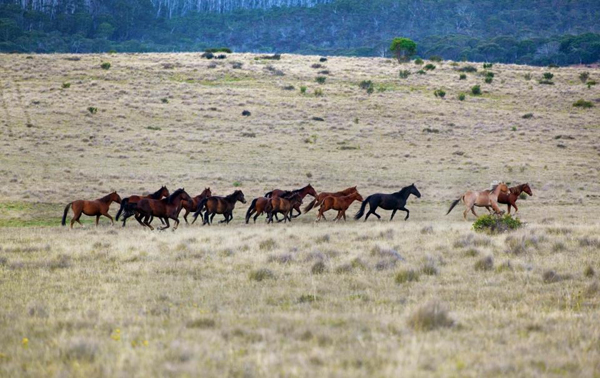
Cochran Horse Treks leads treks from their homesteads at Yaouk, which sits between the Namadgi and Kosciuszko National Parks, across the Snowy Mountains for a genuine Australian outback experience.
For many generations the Cochran family would herd their cattle into the high country for summer grazing until it was banned.
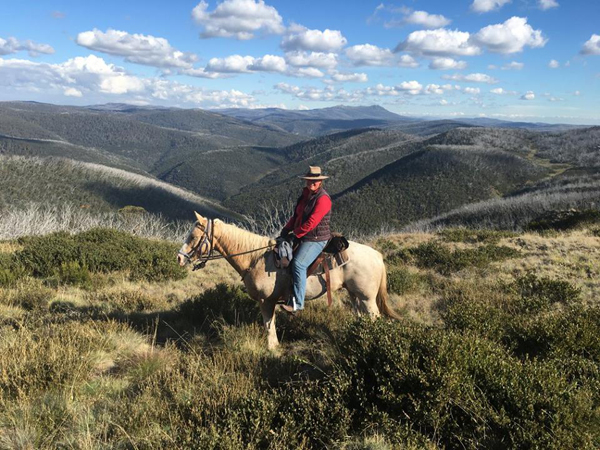
Since then, Peter Cochran and his family have continued the tradition by spending several weeks each summer riding in the remaining accessible areas, visiting secret spots passed on from generation to generation.
Guests will visit historic mountain huts and see and can expect to see mountain scenery, high plains, aboriginal sites, and of course the iconic Snowy brumbies.
Namibia’s Namibs
The wild horses of Namibia live in the south of the country near Aus, a harsh environment on the barren plains in an area called Garub in the Namib Desert. The horses live in the incredibly harsh environment of the desert, with heat, drought, wind, and freezing temperatures.
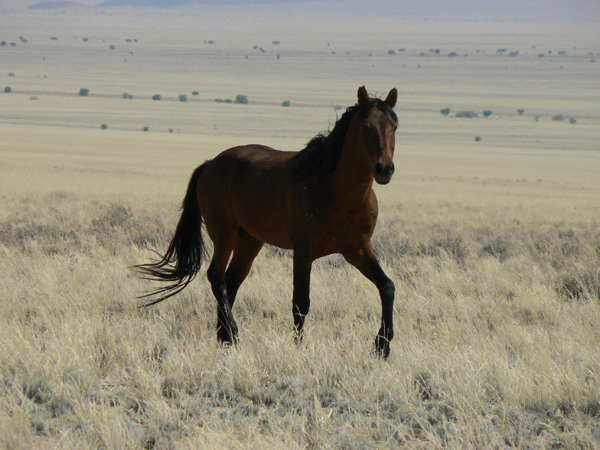
With the support of the Ministry of Environment and Tourism of Namibia (MET), the numbers and behavior of the wild horses have been documented since December 1993. The population fluctuates according to the quantity and quality of available grazing, their numbers ranging between 50 and 280 horses in the 100 years of their existence. Currently, between 100 and 250 horses live in approximately 200 square miles.
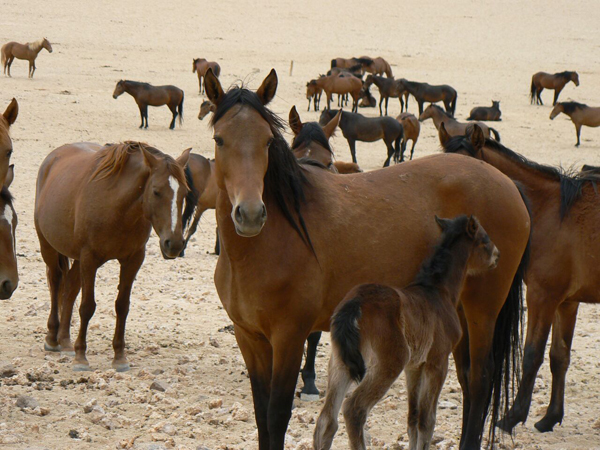
The two most plausible theories of the Namibs’ origin come from the period between 1915 and 1925. One suggests that during WWI, Union of South Africa troops were stationed at Garub, and German forces, which were stationed 15 miles to the east, bombed the Union camp, with the last attack scattering the Union horses.
The second theory suggests that Emil Kreplin, who was the mayor of the harbor town Lüderitz from 1909 to 1914, had a stud farm at Kubub, south of Aus. Kreplin bred workhorses and racehorses. Based on photographs of the Kubub studs, they hold a strong likeness to the Namibs. During WWI, Kreplin was kept prisoner by the Union of South Africa and later lost his fortune. It is assumed that the horses, ownerless and not contained, would have begun to scatter in search of better grazing. For 100 years the horses were able to develop in almost complete isolation, are now considered their own breed.
![]()
Namibia Horse Safari Company has led rides in the Namib for over 20 years and is dedicated to understanding the fragile desert environments and support conservation projects. They lead a “Wolwedans to Wild Horses” 10-night safari. The rides goes along diverse desert terrain, including the great dune sea of the central Namib, grassy plains, and signature inselbergs (land mountains). Guests may even see black rhinos, elephants, cheetahs, and lions. Guests ride 12-30 miles a day, up to six hours a day at all paces over uneven terrain, therefore riders must be experienced riders.

Because it is in a protected area, the company does not subject the wild horses to their domestic horses for safety reasons, but do visit the wild horses at the end of the ride. One of the highlights is that guests get to go with Dr. Telane Greyling who has been studying these horses for over 20 years.
Camargue’s White Horses
Camargue, located on the Mediterranean coast in the south of France, is home to the famous white horses of Camargue. The Camargue Natural Park area is a haven of wetlands, natural lakes and marshes and includes a large UNESCO designated biosphere reserve.
.jpg)
The Camargue horse is said to have lived in the Camargue marshes and wetlands for thousands of years. Traditionally, the horses live in semi-wild conditions in the marshy areas of the region. Typically standing between 13 and 14hh, the Camargue is rugged and stocky. This breed has long standing historical ties to the community, where families have worked with the Camargue horse for generations.
There are plenty of options for riding stables in the area that will take guests on a trek across the salt marshes to catch a glimpse of the horses, especially around Les Saintes Marie de la Mer. Check out Promenade La Fadaise and Les Arnelles to see diverse landscapes and enjoy gallops along the beach.
.JPG)




